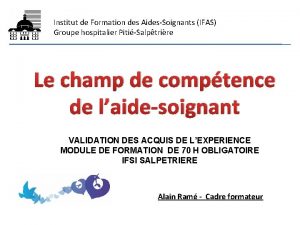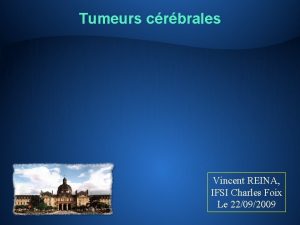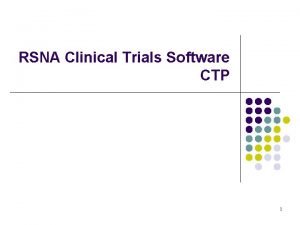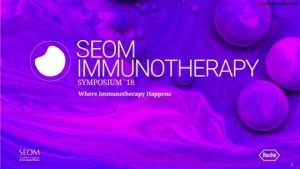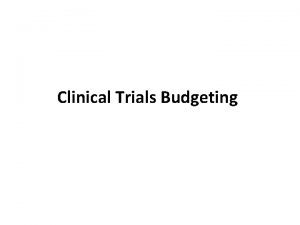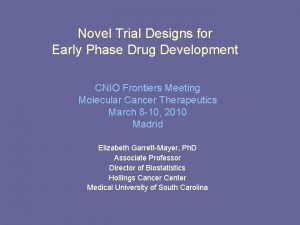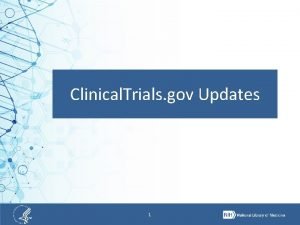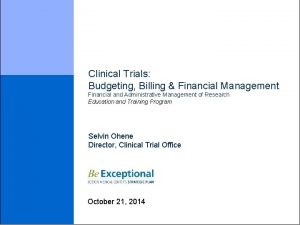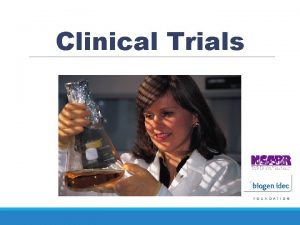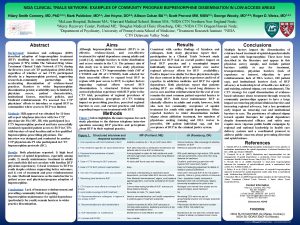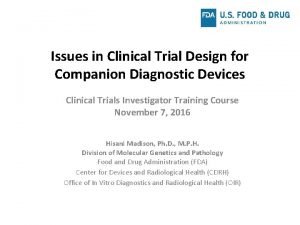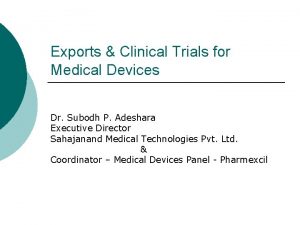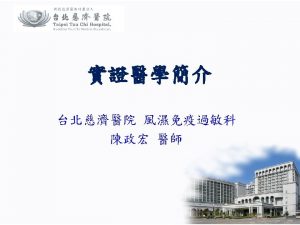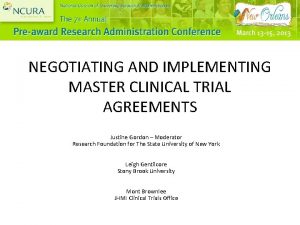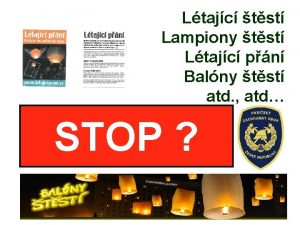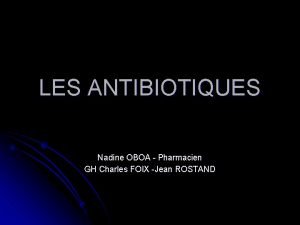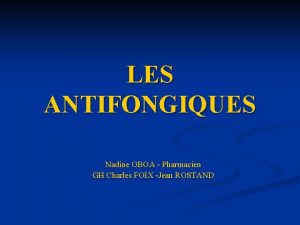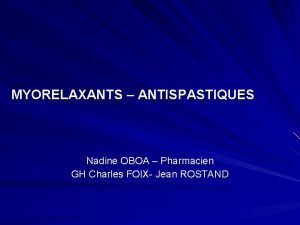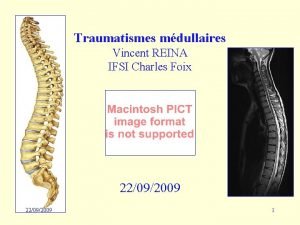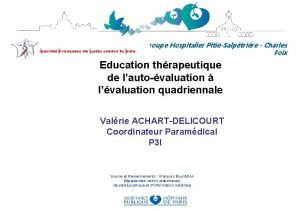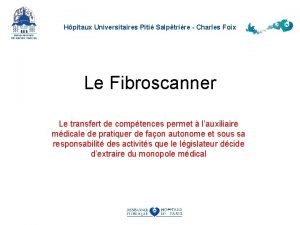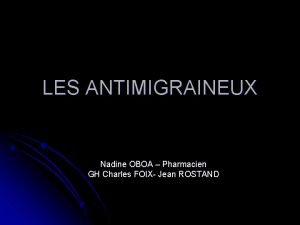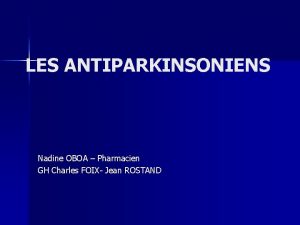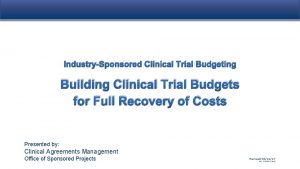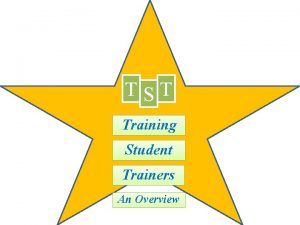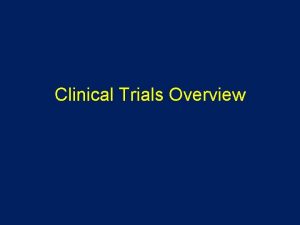TST Charles Foix Group for Clinical Trial in















- Slides: 15

TST Charles Foix Group for Clinical Trial in Stroke Benefit of a target LDL cholesterol of less than 70 mg/d. L after an ischemic stroke of atherosclerotic origin Results of the Treat Stroke to Target trial* Amarenco P, Kim JS, Labreuche J, Charles H, Giroud M, Mahagne M-H, Nighoghossian N, Steg PG, Touboul PJ, Vicaut E, Bruckert E on behalf of the Treat Stroke to Target investigators *Investigator intiated RCT Conducted by the Charles Foix Group for Clinical Trial in Stroke (ARO) at Bichat hospital – University of Paris Supported by the French Neurovascular Society Funding : PHRC (French government), SOS-ATTAQUE CEERBRALE Association (NPO) Unrestricted grant : Pfizer Europe, Astra-Zeneca, Merck, Pfizer global (Korea)

TST Background • The SPARCL trial 1 found a 16% relative risk reduction in stroke with atorvastatin 80 mg per day as compared to placebo in patients with stroke and no known coronary heart disease • In the group with carotid stenosis 2 the relative risk reduction was 33% • In SPARCL, patients achieving a LDL cholesterol of less than 70 mg/d. L (1. 8 mmol/L) had a 28% relative risk reduction as compared to patients who achieved 100 mg/d. L (2. 4 mmol/L) or above 3 • Current AHA/ASA guidelines 4 recommend “intense” statin therapy after an ischemic stroke of atherosclerotic origin but does not stipulate a target level of LDL cholesterol because there is limited data on outcomes with different LDLcholesterol lowering targets • Therefore, there is uncertainty about the target level of LDL cholesterol is appropriate to reduce cardiovascular events after stroke 1. SPARCL investigators. N Engl J Med. 2006; 355: 549 -59 2. Sillesen H, Amarenco P, Hennerici MG et al. Stroke. 2008 Dec; 39(12): 3297 -302 3. Amarenco P, Goldstein LB, Szarek M, et al. Stroke. 2007; 38: 3198 -3204 4. Kernan WN, Ovbiagele B, Black HR, et at. Stroke. 2014 ; 45: 2160 -2236

TST Study Design LDL cholesterol 100 ± 10 mg/d. L (2. 5 mmol/L) Patients with ischemic stroke or TIA with evidence of atherosclerosis 1: 1 Titration of lipid lowering treatment LDL cholesterol <70 mg/d. L (1. 8 mmol/L) ≥ 3 years Investigators used statin and dose of their choice in monotherapy or in combination with ezetimide or other drugs CRAs in the trial unit contacted with patients 3 months before the next visit, making sure they were treated to the assigned target Patients and investigators were not maintained blinded but the adjudication committee was fully blinded

TST Primary End-Point • Composite of : • • • non fatal ischemic stroke or undetermined stroke non fatal MI Unstable angina followed by urgent coronary revascularization TIA followed by urgent carotid revascularization and vascular death including sudden death

TST Study specifications • Patients were enrolled between March 15, 2010 to December 31, 2018 • We followed-up the patients until one year after last patients included • It was an event driven trial until an accrual of 385 primary endpoints • Follow-up visits occurred every 6 months • The number of center was 61 in France, 16 in Korea (joined the trial in late 2015) • Trial was stopped on May 25, 2019 after allocated funds have been used, with 277 primary endpoints accrued • Median follow-up 3. 5 years (5. 3 years in France, 2. 0 years in Korea)

TST Allocation Follow-up Primary Analysis

TST Baseline characteristics Characteristics Age, years Male sex, no/total no, (%) Body-mass index, median (IQR) Entry event Ischemic stroke TIA Time since entry event, days, median (IQR) Medical history Hypertension, no/total no, (%) Diabetes, no/total no, (%) Dyslipidemia, no/total no, (%) Former smoker, no/total no, (%) Current smoker, no/total no, (%) Stroke or TIA, no/total no, (%) Coronary artery disease, no/total no, (%) Statin naïve (%) LDL-c <70 mg/d. L (N=1430) LDLc 100± 10 mg/d. L (N=1430) 66. 4 (11. 3) 67. 0 (11. 1) 971/1430 (67. 9) 25. 6 (23. 3 -28. 6) 1220/1425 (85. 6) 205/1425 (14. 4) 6. 0 (4. 0 -10. 0) 909/1422 (63. 9) 328/1420 (23. 1) 878/1418 (61. 9) 349/1420 (24. 6) 446/1420 (31. 4) 169/1419 (11. 9) 263/1418 (18. 5) 800/1418 (56. 4) 963/1430 (67. 3) 25. 5 (23. 2 -28. 4) 1229/1429 (86. 0) 200 /1429 (14. 0) 6. 0 (4. 0 -11. 0) 959/1424 (67. 3) 315/1421 (22. 2) 862/1420 (60. 7) 306/1421 (21. 5) 413/1421 (29. 1) 153/1420 (10. 8) 227/1419 (16. 0) 769/1420 (54. 2)

TST 136 mg/d. L (3. 5 mmol/L) 135 mg/d. L (3. 5 mmol/L) < Statin only 94% Statin+Ezetimibe 5% 96 mg/d. L (2. 4 mmol/L) Statin only 66% Statin+Ezetimibe 33% 65 mg/d. L (1. 7 mmol/L)

TST Achievement of prevention targets in the two treatment arms Active smokers 140 mm Hg -75% 135 mm Hg Smoking cessation 80 mm Hg Hb A 1 C 8. 1% 75 mm Hg Hb A 1 C 7. 8% Blood pressure lowering Hb A 1 C 7. 2% Hb A 1 C 7. 0% Diabetes control 23% Diabetics

TST PRIMARY OUTCOME Ischemic stroke or undetermined stroke, myocardial infarction, urgent coronary revascularization following unstable angina, urgent carotid revascularization following TIA, vascular death 10. 9% PRE SPECIFIED COVARIATES ADJUSTMENTS. Age. Sex. Entry event (ischemic stroke vs. TIA). Time from symptom onset to randomization. Geographical region (France vs Korea) (SPARCL trial adjustment) 8. 5% 22% RRR Adjusted HR = 0. 78 [95% CI : 0. 61 to 0. 98; P value = 0. 036] Non adjusted HR = 0. 77 [95% CI; 0. 61 -0. 97; P value = 0. 029]

TST Secondary Outcomes LDL <70 mg/d. L (N=1430) LDL 100± 10 mg/d. L (N=1430) Hazard Ratio (95% CI) P Value myocardial infarction and urgent coronary revascularization 20/1430 (1. 4) 31/1430 (2. 2) 0. 64 (0. 37 -1. 13) 0. 12* cerebral infarction and urgent carotid and cerebral artery revascularization cerebral infarction or TIA any revascularization procedure (both urgent and elective) Carotid Coronary Peripheral vascular death all cause death Cerebral infarction or intracranial hemorrhage Intracranial hemorrhage Newly diagnosed diabetes Primary outcome or intracranial hemorrhage 88/1430 (6. 2) 109/1430 (7. 6) 0. 81 (0. 61 -1. 07) 120/1430 (8. 4) 139/1430 (9. 7) 0. 87 (0. 68 -1. 11) 94/1430 (6. 6) 99/1430 (6. 9) 0. 93 (0. 70 -1. 24) 17/94 44/94 33/94 22/1430 (1. 5) 88/1430 (6. 2) 23/99 51/99 25/99 32/1430 (2. 2) 93/1430 (6. 5) 0. 69 (0. 40 -1. 18) 0. 97 (0. 73 -1. 30) 103/1430 (7. 2) 126/1430 (8. 8) 0. 82 (0. 63 -1. 07) 18/1430 (1. 3) 103/1460 (7. 2) 1. 38 (0. 68 -2. 82) 1. 27 (0. 95 -1. 70) 13/1430 (0. 9) 82/14 133/1430 (9. 3) 165/1430 (11. 5) 0. 80 (0. 63 -1. 00) * Hierarchical testing stopped

TST Key subgroups Nominal interaction P Value 0. 26 0. 003 0. 16 0. 76

TST Conclusions • With the limitation that we had to stop the trial when 277 primary endpoints were accrued whereas 385 were requested • This trial shows that after an ischemic stroke with evidence of atherosclerosis, a target LDL cholesterol of less than 70 mg/d. L (1. 8 mmol/L) compared to 100± 10 mg/d. L (2. 5 mmol/L), reduced the risk of subsequent cardiovascular events • With no significant increase in intracranial hemorrhage • And no increase in newly diagnosed diabetes


 Ifas charles foix
Ifas charles foix Ifsi charles foix
Ifsi charles foix Météo blue foix
Météo blue foix Cynchia
Cynchia Rsna clinical trial processor
Rsna clinical trial processor Morpheus clinical trial
Morpheus clinical trial Clinical trial budget example
Clinical trial budget example Novel clinical drug trial design
Novel clinical drug trial design Clinicaltrials gov api
Clinicaltrials gov api Clinical trial financial management
Clinical trial financial management Phase 4 trial
Phase 4 trial Nida clinical trial network
Nida clinical trial network Companion diagnostic clinical trial
Companion diagnostic clinical trial Clinical trial exports
Clinical trial exports Clinical trial worksheet
Clinical trial worksheet Master clinical trial agreements
Master clinical trial agreements
